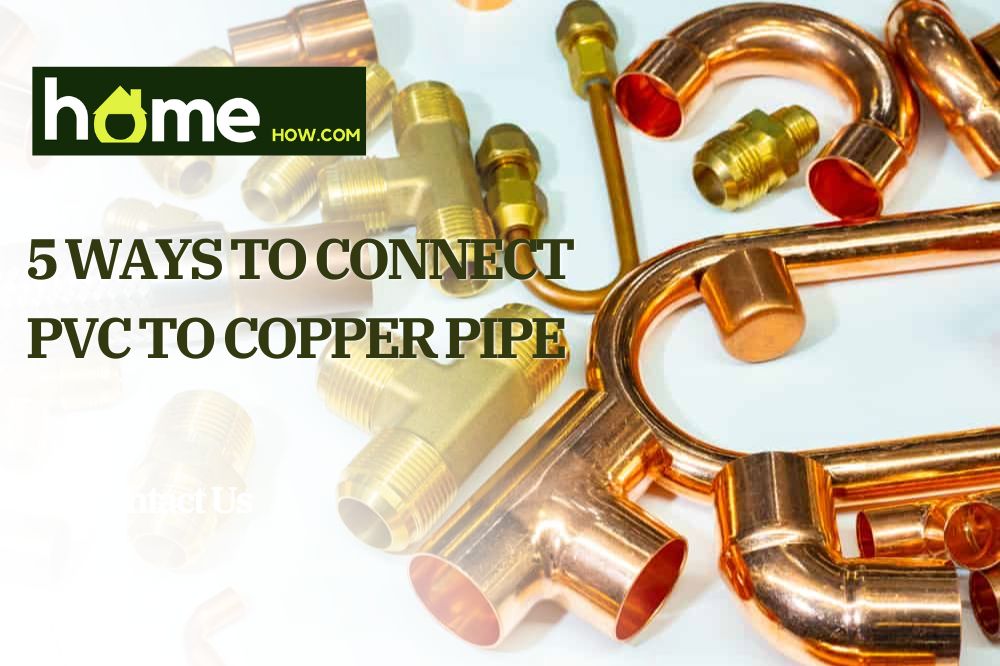Do you ever wonder if you can attach different pipe materials? Actually, you can! In this article, we will provide you with a step-by-step guide on how to connect PVC to copper pipes. Along with the detailed procedures, we will also list down the most recommended fittings depending on your needs.
What are the main differences between PVC and copper pipes?
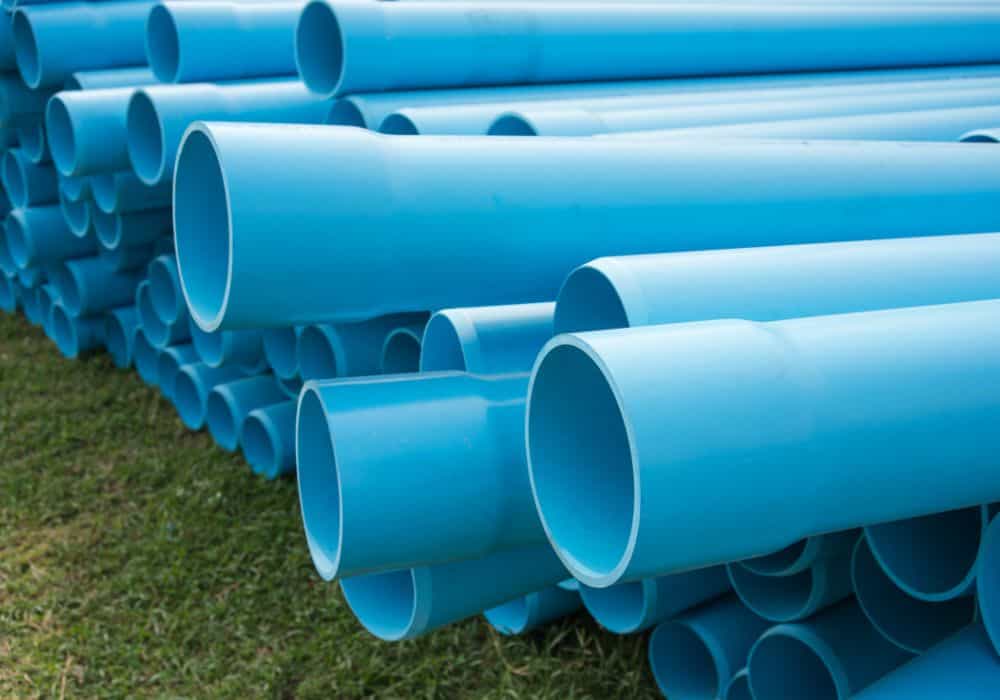
PVC and copper pipes are two of the most popular piping materials in the plumbing industry. PVC, in particular, is known for its remarkable corrosion-resistant properties, making it suitable for waste line systems, drain traps, and water supply lines. In addition, this plastic pipe can handle high water pressure.
Meanwhile, in terms of durability, longevity, and material composition, copper wins the competition among all other metal-based pipes. Copper pipes are resistant to both heat and cold, hence a perfect choice for water lines. More so, these can be easily installed above the surface or underground.
Even with the differences, both PVC and copper pipes top off their corresponding categories. Therefore, some opt to combine these two, either for their functionality or due to material limitations. And if you plan to do so, there are certain things and other key information that you should comprehend in advance.
What are some crucial aspects you need to know beforehand?
Connecting two different piping materials can be a challenge. Therefore, it’s vital to take into account some aspects before you start the process. First, you have to consider the measurement of the pipes, specifically the thickness. This is crucial to avoid potential leaks during the installation.
Likewise, you need to factor in the depth of the insertion using a gauge plumbing tool so that you can choose the appropriate size for the connector. Aside from these, you should make sure to clean the end of the pipes thoroughly. File the edges softly so that the pipes would connect efficiently.
How to properly connect PVC to copper pipe according to the fitting?
There are actually several ways to connect a PVC pipe to a copper pipe. Each method follows a specific guideline and different material requirements. Thus, it’s much better to discuss them one by one in detail for better understanding and for you to pick the right method accordingly.
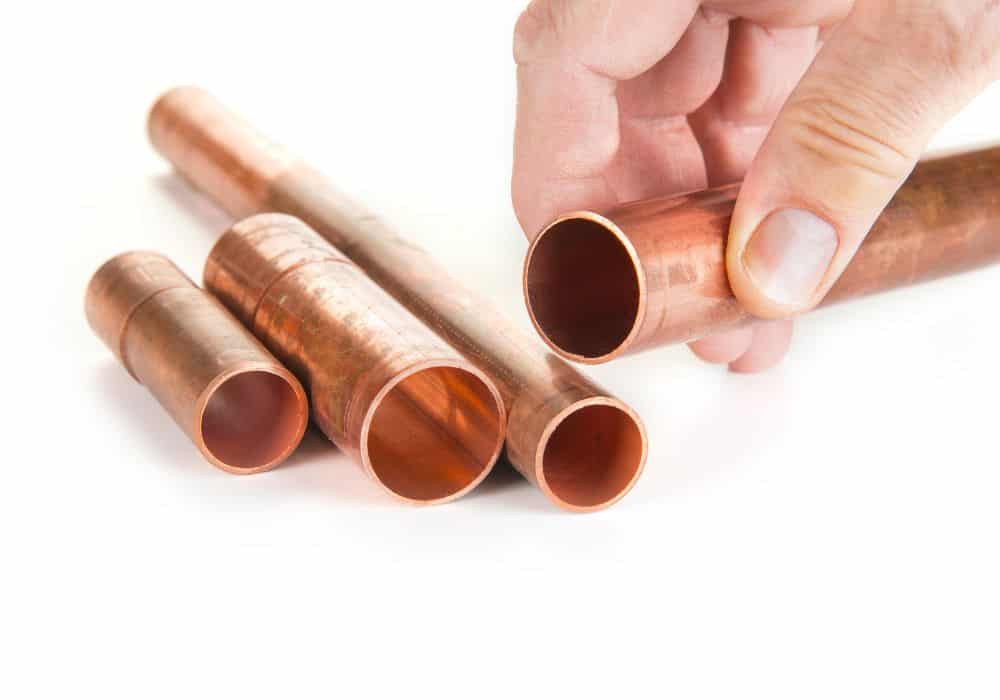
1. Linking pipes via compression fittings
This is definitely the most common method when it comes to attaching PVC or CPVC pipes to copper pipes. Why? Because it does not entail soldering. It means there’s no need for an open flame to attach the pipes. Aside from being a safer way of linking tubes, it’s very easy to install.
Often than not, compression fitting is highly recommended for longer connections, perhaps beyond 10 meters long. This method uses compression or plastic adapters, which then serve as the link between the two pipes.
Start the process with the plastic fitting and swipe a small amount of primer to the end of the pipe as well as the adapter. Then apply PVC cement on both pipe ends before pushing the fitting on the plastic pipe. Twist a little and keep it steady for a couple of seconds to ensure that the cement sets.
After preparing the plastic pipes, you may now get the compression nut, which is used for the copper fitting. Unscrew and slide both the nut and compression ring to the copper pipe’s end. Afterward, exert force and screw the nut to the fitting.
Now that both pipe preparations are complete, you may tighten the nut and make sure that it squeezes the ring. You can use pliers or a pipe wrench to seal the pipes and create a watertight seal. Since the connection is already secured, there’s no need to use a pipe dope or a plumber’s tape.
The materials that you need to purchase include a compression adapter, compression ring, and compression nut to make compression fittings, and these are quite expensive. Despite its costly expenses, the method is still popular because it provides a durable connection that lasts long.
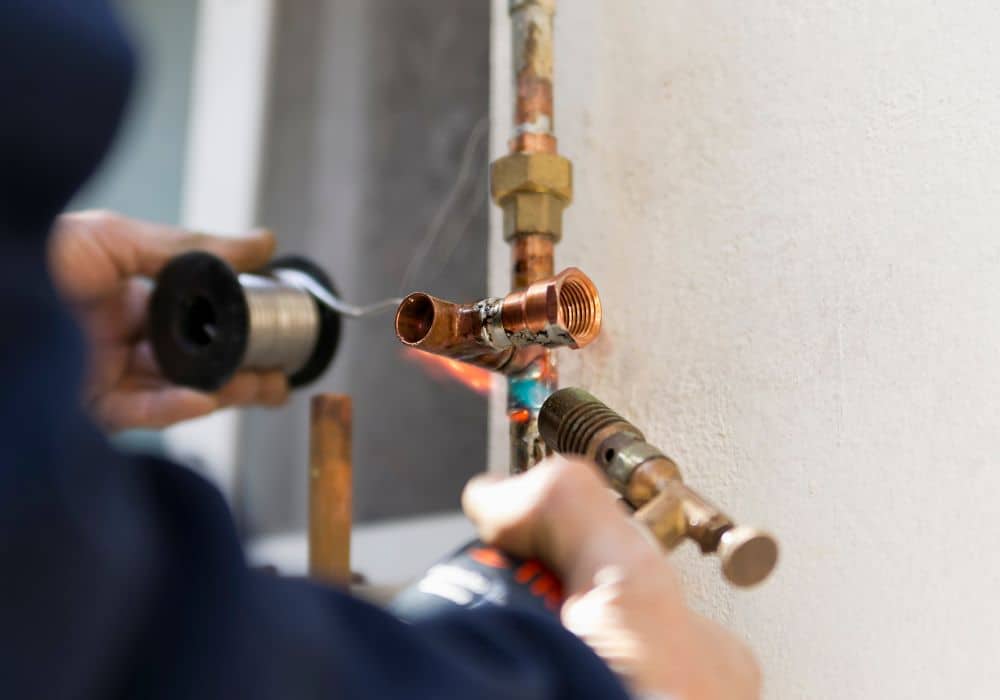
2. Joining pipes through soldering
Another way to connect the pipe is through soldering. In this method, you solder the copper female pipe end by applying flux. Then, you thread the copper fitting slowly over the pipe end. Subsequently, you connect the female fitting to the copper pipe.
Once these steps are completed, you can now screw the male plastic fitting. Unfortunately, the soldering process itself does not give a very solid seal. So, to secure the connection between the female thread and the male thread, it’s best that you add glue.
In general, soldering isn’t that safe because it capitalizes on the use of open flame. So, if you’re doing it on your own, then you need to be very careful because it may lead to fire accidents.
3. Attaching push-fit fittings
As mentioned earlier, compression fittings are best for long pipe connections. So, if you’re just doing some short connections, probably around 5 meters long, then the most suggested option is push-fit fittings. This method is very easy and perhaps the fastest way to connect PVC and copper pipes.
In doing this, you won’t have to use glue or depend on soldering. You simply just attach the fitting to both ends of the pipes and push the connection slowly yet sturdily.
Just like compression fittings, this one does not require an extra seal using Teflon tape or PTFE tape. It’s because the fitting already comes with an internal O-ring that becomes compacted to ensure a watertight seal.
But before you buy push-fit fittings, it’s crucial to know the exact sizes. Moreover, you need to have an idea of the types of push-fits so you can decide the best option. Some of the most common push-fits are elbow fittings, tee, and 1/2″ or 3/4″ couplings. There’s also a push fit with a valve available in the market.
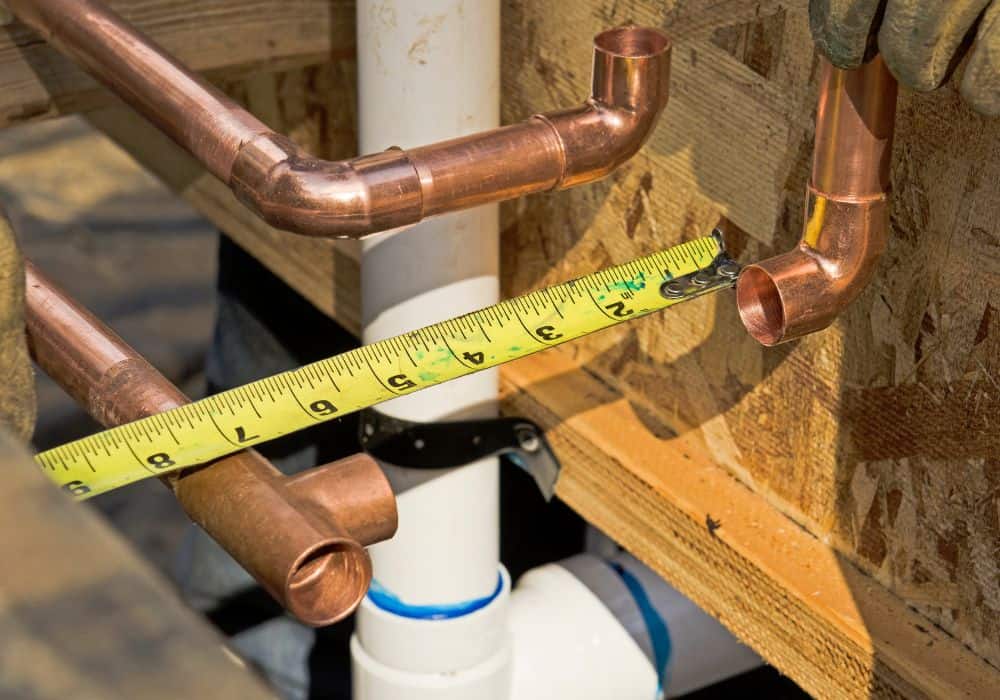
4. Maximizing shark bite fitting
Next on the list of popular plumbing connections is none other than shark-biting fitting. This has been utilized by both commercial and residential pipe connections. Aside from that, it’s quite renowned in terms of radiant heating systems.
Installing a shark bite fitting kicks off by cutting the PVC pipe. You may also use a deburring tool to smoothen the edges of the pipe. Subsequently, you drive the pipe into the fitting, which then provides a watertight seal. Therefore, there’s no need for tapes because this method ensures a leak-free connection.
A notable feature when using shark biting fitting is the fact that you can reuse it up to 4 times. Therefore, if there’s a need for adjustment, you simply take the disconnection tong and retract the connection. Plus, shark biting offers a variety of sizes, making it very popular among DIY users and plumbers.
5. Installing thread adapters
Now, for the final recommendation, we have thread adapters. This method highlights the relevance of utilizing a male plastic end as well as a female metal end. It should not be interchanged because a male adapter may damage the female plastic adapter if pushed very hard.
So, to begin, you need Teflon tape or if you don’t have one, a pipe dope would do. Use either one of these to secure the threaded joints. Then, thread the pipe ends to the adapter accordingly. You need to be wary not to over-tighten the connection because this can lead to cracks.
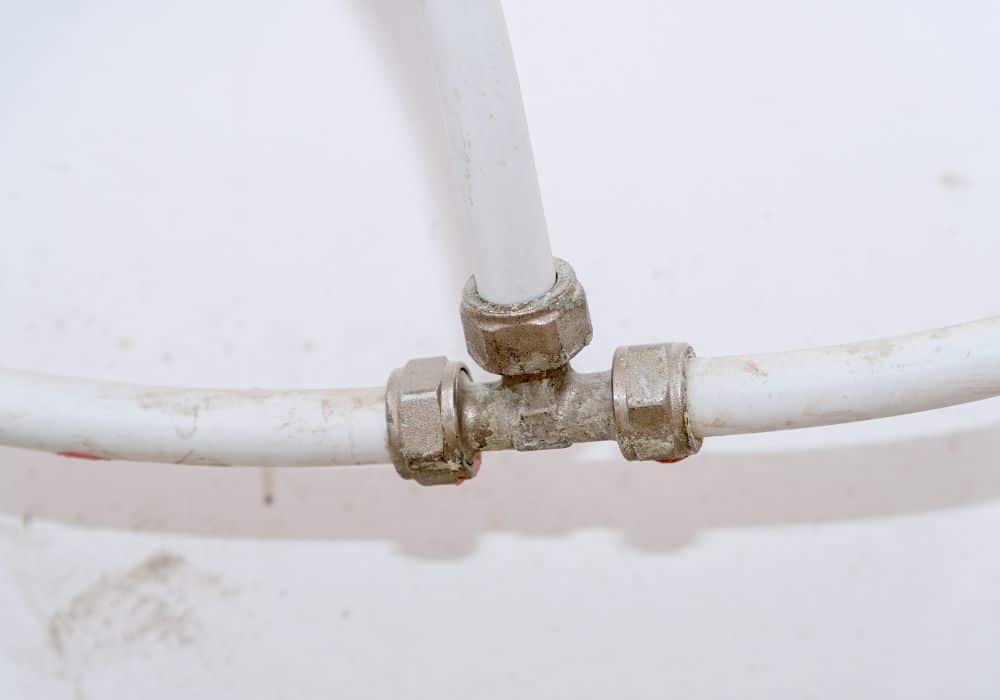
Where to buy different connection fittings and adapters
Plumbing installations and connections are definitely a great way to harness your technical skills. Although DIY installations and repairs can be helpful and fun, it may be a challenging feat if you don’t have the right materials.
Therefore, you need to take a trip to the local hardware store to purchase all the important fittings. Or if you want, you may opt for online platforms like Amazon and Home Depot for your plumbing needs. But of course, when buying online, you have to check the ratings, reviews, and reputation in advance.
In addition, it’s important to take into consideration some key properties. For example, if you’re buying a push-fit fitting or a thread adapter, then the best option would be something with corrosion-resistance and lead-free.
Choosing a material that is resistant to rust and other chemicals is highly recommended to save money on premature replacements. On top of the materials, you also need easy access to different plumbing tools like pipe wrenches, pliers, disconnect clips, tubbing cutters, and mole grips, among others.
All these may be a hefty investment but these are certainly useful, especially if you have a penchant for doing all the plumbing works on your own. In fact, these can help you save thousands of dollars from expensive plumbing repairs, in case you don’t have homeowner’s insurance.
Conclusion
Installing plumbing fixtures is a fascinating task that would probably entice lots of homeowners who want to save money on labor costs. The process of linking pipes is a gratifying accomplishment. Plus, you are given different ways to link one tube to another.
But despite the variety of methods available in connecting PVC and copper pipes, it’s still best if you follow the same pipe material for a specific plumbing line. For example, a PVC pipe seamlessly goes with a PVC pipe while a copper pipe suits perfectly with a copper pipe.
